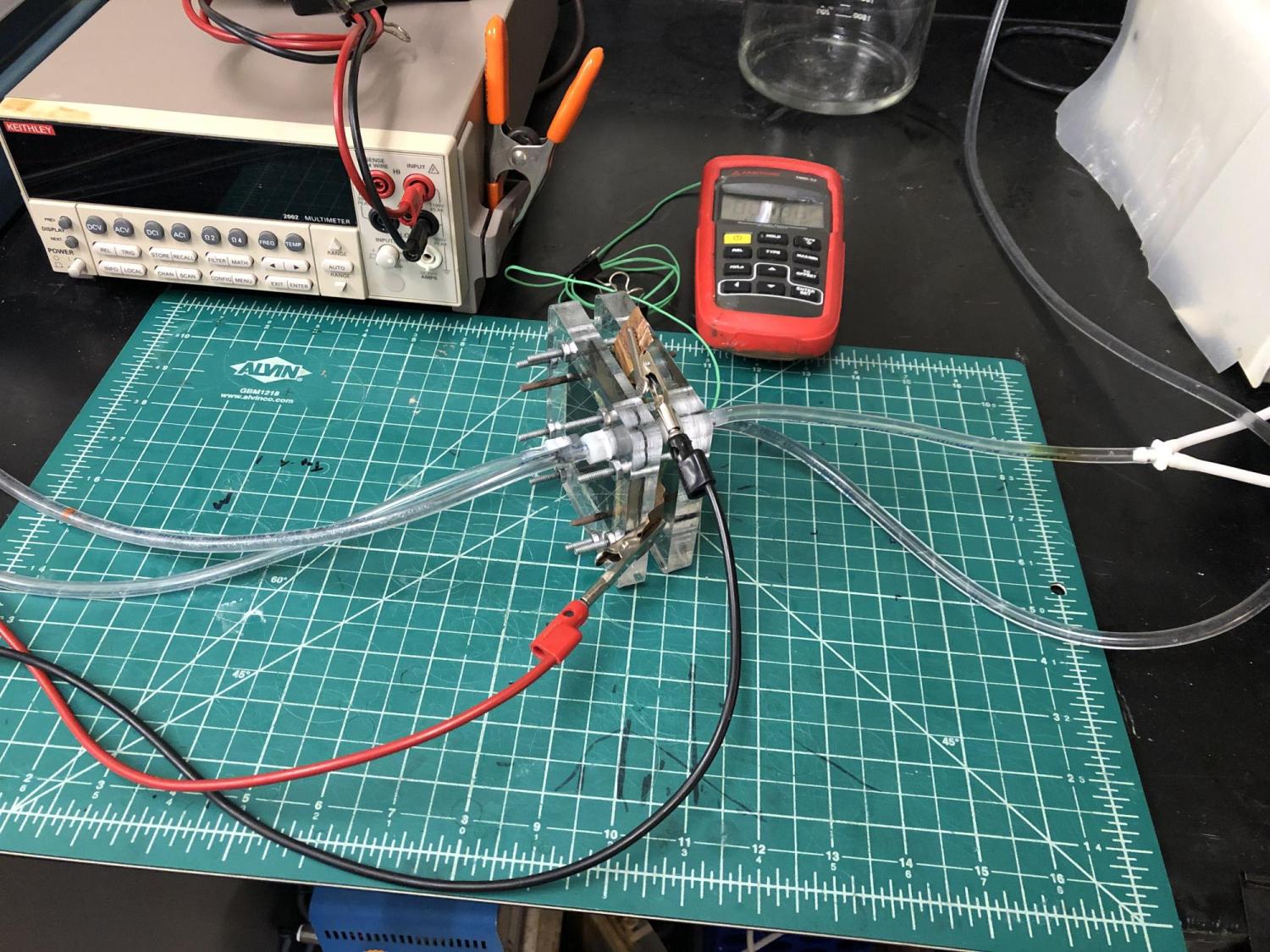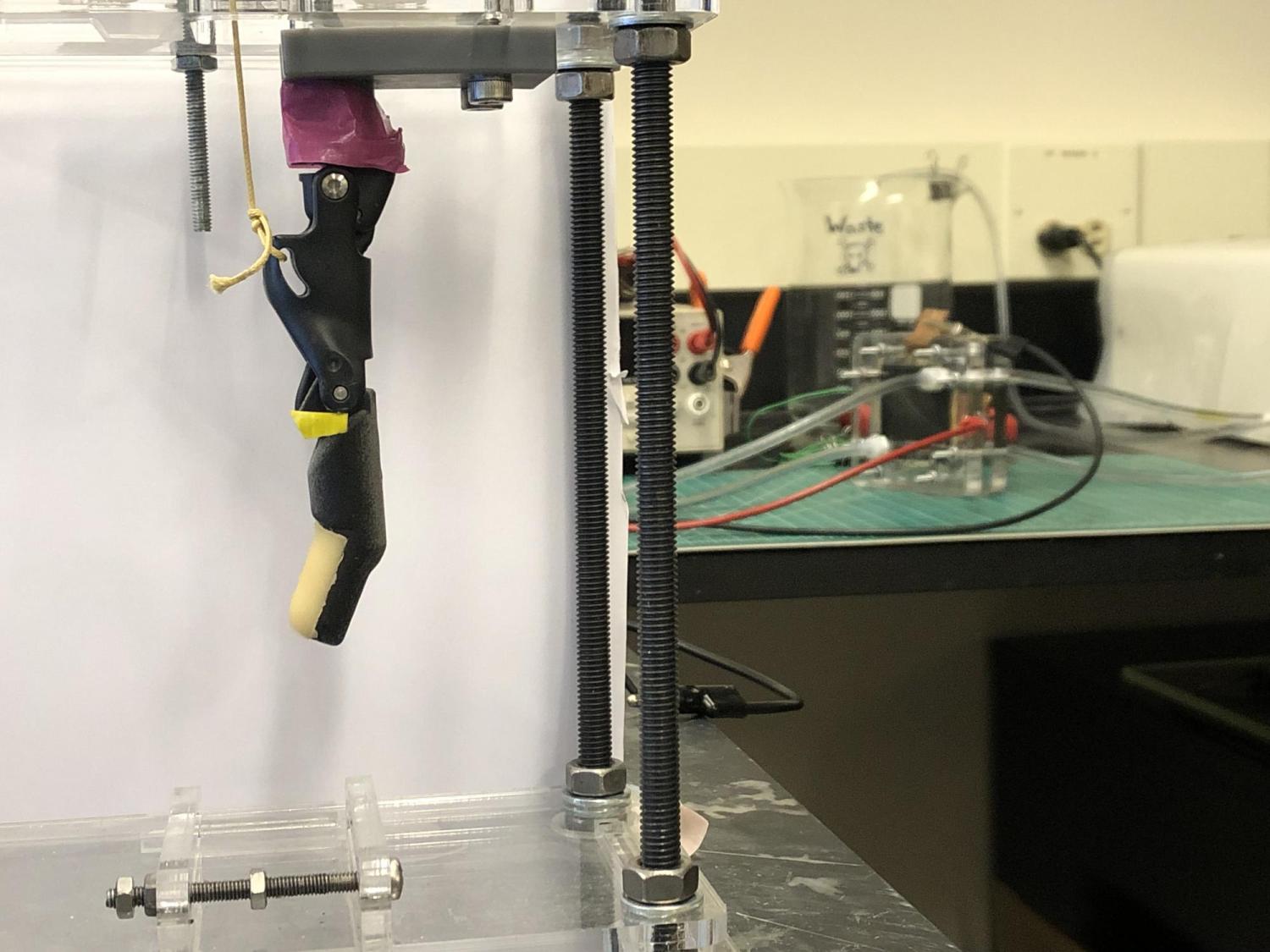Glucose Fuel Cell
[video:https://www.youtube.com/watch?v=S_KFb_nhmRc&t=5s]
August 2021 video highlight from the CU Engineering Communication team
We are working in conjunction with Dr. Jacob Segil of CU Boulder and Dr. Richard Weir of CU Anschutz on an implantable glucose fuel cell for medical uses. Our team is interested in developing implantable biofuel cell technology to be competitive with disposable or induction-charged batteries for implantable medical devices and prosthetics.

Current single-membrane glucose fuel cell being used for material characterization.
Our fuel cell research is focused into three silos:
- Optimizing materials to maximize cell output per area of membrane
- Redesigning cell to maximize membrane area for volume
- Testing hemocompatibility of materials for medical use
Currently, our team is using a 10 cm2 alkaline electrolyte membrane fuel cell to characterize material properties for implementation. Materials being examined currently are the electrolyte membrane, gas diffusion layer, catalyst, and ionomer. We examine material function at glucose concentrations similar to physiological levels to represent the function of our cell as an implantable device, as well as at 10x physiological levels with an alkaline (pH 12.6) feed to represent non-implantable function.
To optimize design, our team is developing flexible, current-collecting membranes to minimize the size of a cell. We aim to develop a rolled membrane design that allows for a form factor similar to that of a AA battery.
We are currently seeking collaborators for research into biocompatibility and hemodynamics. If you are interested in our research, please reach out to Dr. Pellegrino or any related graduate students.

Ottobock bebionic finger powered by fuel cell being fed physiological glucose concentrations to demonstrate fuel cell capabilities.

Students
Jared Beshai - jared.beshai@colorado.edu
Tom DiSorbo - thomas.disorbo@cuanschutz.edu

